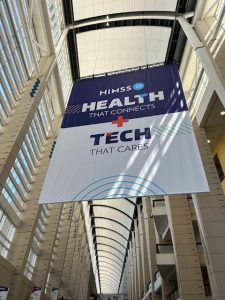Even in the dog days of summer, DHIT has stayed energized and active—collaborating, exchanging fresh ideas, and building solutions that truly advance interoperability.
Our team has been actively attending key events and staying up-to-date with evolving standards and regulations. This helps us bring the latest knowledge and insights back to our strategic partners—ensuring DHIT’s applications continue to support clients while easing the burden of reporting and compliance.
That old adage about going far…here’s to the power of teamwork and exciting opportunities ahead! We’d love to keep the conversation going-reach out to engage on any of the topics our team has explored this summer.
Dynamic Health IT had the opportunity to participate in several major HL7 events this summer, including:
- HL7 FHIR Connectathon 40 (Pittsburgh)
- 39th HL7 Working Group Meeting (Pittsburgh)
- HL7 C-CDA IG Author Bootcamp
- HL7 Build a FHIR-Powered Healthcare AI Agent
- HL7 Virtual C-CDA Implementation-a-thon
Each event highlighted the ongoing evolution of healthcare standards, providing valuable opportunities for collaboration, testing, and advancing interoperability.
Blazing New Trails at the FHIR Connectathon 40
At HL7’s Connectathon 40 in Pittsburgh over the weekend, our main focus was on Symptoms Data Exchange. We also participated in the Clinical Reasoning and AI Transparency on FHIR tracks, as well as the Vulcan Utilizing the Digital Protocol (UDP) breakout.
Symptoms Data Exchange
Joint Commission and Dogwood Health have been leading the work on the new Symptoms Resource profile and Implementation Guide. Before this event, Dynamic Health IT prepared a patient intake form in our ConnectEHR Patient Portal, and joined the group collaborating on the Symptoms Implementation Guide and Structure. Over the course of the weekend, we tackled several outstanding questions, including:
- Scope Reduction for the Effective Element
- Bindings and Descriptions
- Triggers and Exacerbating Factors
- Codification of Bindings
Additionally, the group explored and tested real-world scenarios from Dynamic Health IT, Apple, Mayo Clinic, and WebMD, examining how patients enter symptoms. This testing provided insights into potential improvements for the IG.
The changes from this weekend have been included in the latest version of the Resource profile here.
Vulcan UDP
We tested interoperability with clinical research protocols, with a strong interest in incorporating the Symptoms IG into the UDP scope. This adoption makes sense, and implementers like Dynamic Health IT and Apple are eager to advance interoperability for clinical studies and trials.
Clinical Reasoning
The Clinical Reasoning track focused heavily on electronic Clinical Quality Measures (eCQMs) and decision support workflows powered by CDS Hooks. Participants tested the latest versions of quality measures represented in FHIR, ensuring alignment with QI-Core and CQL specifications.
The track included work on measures such as:
- CMS124v14 – Cervical Cancer Screening
- CMS125v14 – Breast Cancer Screening
- CMS130v14 – Colorectal Cancer Screening
- CMS165v14 – Controlling High Blood Pressure
- CMS349v10 – HIV Screening
- CMS646v4 – Antidepressant Medication Management
DHIT current focus is data collection for Quality and USCDI+ as we participate in Argount Bulk Optimizer sessions to engage in combating the Bulk FHIR IG issues, expand the parsing of QRDA I to FHIR resources, and work on improving the flow of data.
Alongside eCQM testing, the track advanced the use of CDS Hooks to deliver real-time clinical decision support at the point of care. This included evaluating how hooks such as order-select, order-sign, and patient-view can trigger guidance, reminders, or measure-related insights within provider workflows.
For DHIT, this was an opportunity to validate how our applications can reliably handle eCQM logic and support measure calculation directly in FHIR. This fall, we will be evaluating the use of CDS Hooks with CQMsolution to embed intelligent, standards-based decision support that eases the compliance burden for clients. This technology will lend itself to Dynamic Hooks for Prior Auth support and HTI-4 requirement.
Diving in deep at the HL7 C-CDA Implementation-a-thon (IAT)
The 23rd IAT focused on bridging CDA and FHIR, evaluating how clinical document standards can evolve while maintaining interoperability.
DHIT engaged during the “Ask ASTP/ONC?” session, gaining clarity on some of the intentions behind the e1 Patient Restrictions for the HTI-1 2025 requirement. The rule is vague, and the burden is on the EHR to comply and offer a solution the Patients and Providers can appreciate.
CDA IG Production in a FHIR World
- CDA IGs were historically built using tools like Trifolia WB and MDHT, but are now being transitioned into a FHIR-friendly SD format compatible with the HL7 IG Publisher.
- This shift makes CDA artifacts far more accessible (HL7 CDA Online) where they used to require downloading complex zip files
- Consolidated CDA (C-CDA) is the first IG produced in this way, and newer versions (aligned with USCDI v3 & v4) are already in development.
- CCDA to FHIR is a method for validation that CDA components are represented and map correctly to FHIR
CDA–FHIR Alignment
- The group reaffirmed that alignment is essential: “If you can have something in CDA, then you can have it in FHIR.”
- The FHIR Clinical Document profile is conceptually similar to CDA but designed for FHIR, allowing straightforward CDA → FHIR mapping (though the reverse is less direct).
- This provides a foundation for future IGs that extend CDA capabilities into FHIR-native structures.
Other Highlights
- International Patient Summary (IPS) continues to expand as a multi-SDO effort supported by ISO, SNOMED, HL7, IHE, and CEN.
- Consent & Metadata – growing recognition of the need for standardized consent documentation in structured data exchange.
- Lab Information Systems often use internal codes rather than LOINC.
- The Sequoia Project is driving an initiative for iterative LOINC adoption, starting with the most common lab tests to improve interoperability.
- PIQI (Patient Information Quality Improvement) – a promising framework for scoring data quality across dimensions like accuracy, conformity, and plausibility.
- Data Uniqueness & Persistence – Ensuring stable identifiers across systems is critical for accurate FHIR-based data exchange. By maintaining consistent IDs, DHIT and our strategic partners can prevent duplication, improve interoperability, and ensure that patient and clinical data flows reliably across applications and reporting systems.
HL7 39th Annual Plenary, Working Group Meeting
- AI Challenge Overall Awardee Winners & AI Challenge Overall Award
- CEO Charles Jaffe, MD, PhD, will step down at the end of the year, capping nearly 20 years of organizational leadership.
- HL7’s meeting showcased real-world use cases of medical-dental interoperability, including those involving sleep apnea and head and neck cancer.
- Learning Health Systems (LHS) Work Group meeting proved to be engaging as various teams work to help shape technical frameworks and policies that influence the healthcare ecosystem.
HL7 C-CDA IG Author Bootcamp
The CDA Bootcamp offered an educational overview of development enhancements for authoring CDA specifications. Key updates included:
- The shift toward a StructureDefinition-based infrastructure enables CDA content to be authored with greater precision and alignment with FHIR.
- Tools you will want to spend some time engaging with if you are looking to build HL7 IGs:
- FHIR IG Publisher
- FHIR Shorthand (FSH)
FHIR-CDA-Validation are now central to CDA IG development, helping authors create and modify guides quickly and consistently. This evolution reflects the larger movement to streamline CDA–FHIR alignment and give implementers stronger, more efficient toolsets for interoperability.
Building FHIR-Powered Healthcare AI Agents
At the HL7 “Build a FHIR-Powered Healthcare AI Agent” workshop, the agenda spanned two days.
- Day 1 set the stage with introductions, overviews, and live testing, giving participants a grounding in AI terminology and categories of AI (chatbots vs. agents vs. agent-to-agent communication vs. Model Context Protocol (MCP)—a framework that allows AI to achieve data connections with existing apps to extend capabilities).
- Day 2 spotlighted PhenoML’s AI-powered FHIR library, highlighting the promise of AI-driven actions on health data. While the Google Lab sandbox setup wasn’t particularly user-friendly, the prevailing sentiment was a blend of excitement and curiosity. Attendees agreed that while the tools are still maturing, their potential impact on healthcare is immediate and real. Looking ahead, the focus will be on moving beyond the lab into practical, scalable use cases where custom agents can transform how we query, manage, and act on FHIR data.
Key Takeaways
Both the Connectathon and Implementation-a-thon reaffirm the importance of collaboration in advancing healthcare interoperability.
Dynamic Health IT remains committed to contributing to these conversations, testing solutions in real-world workflows, and ensuring that evolving standards support better healthcare outcomes.




